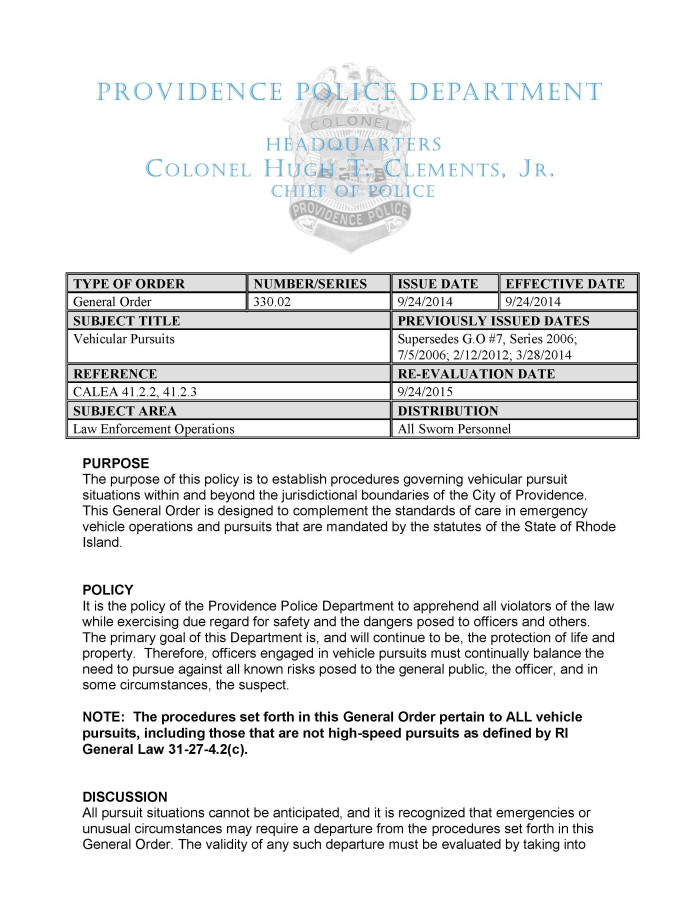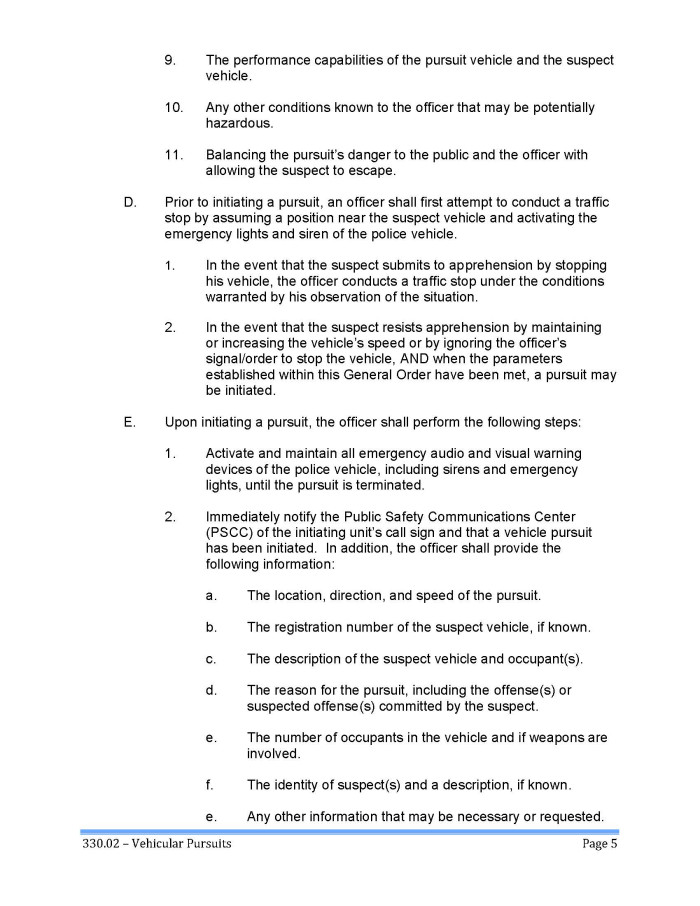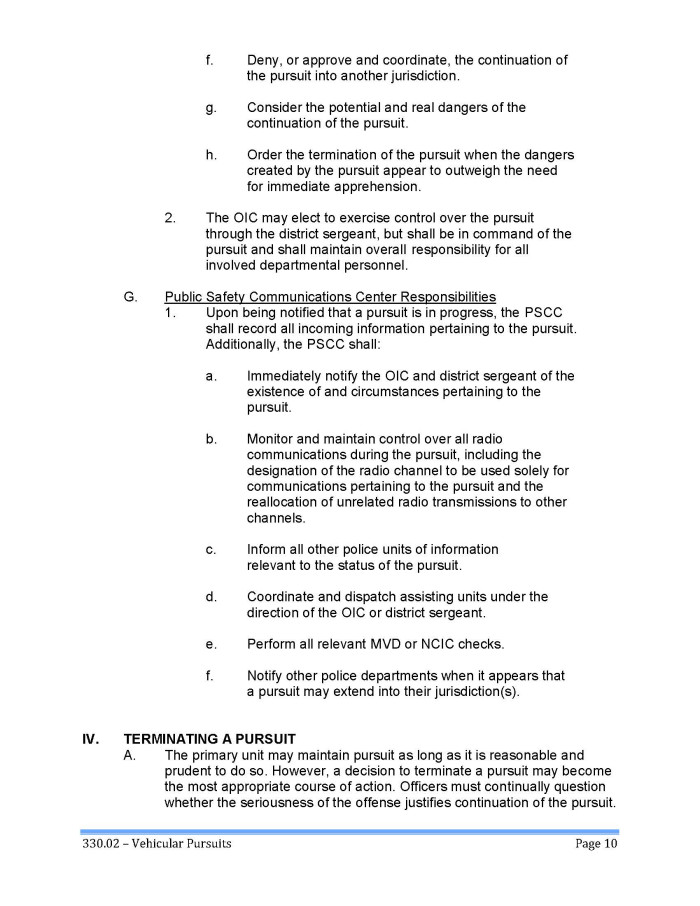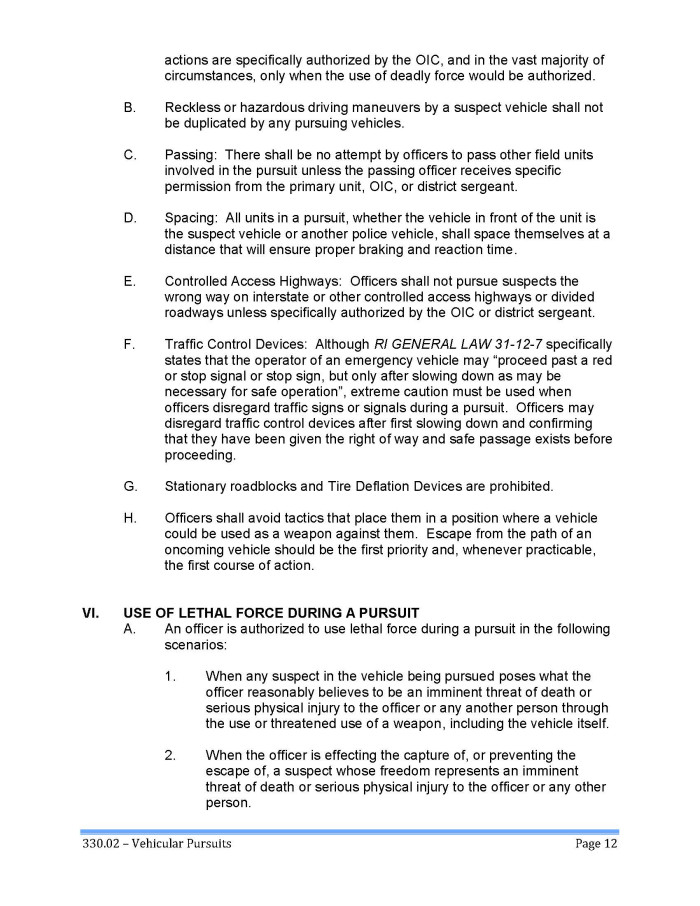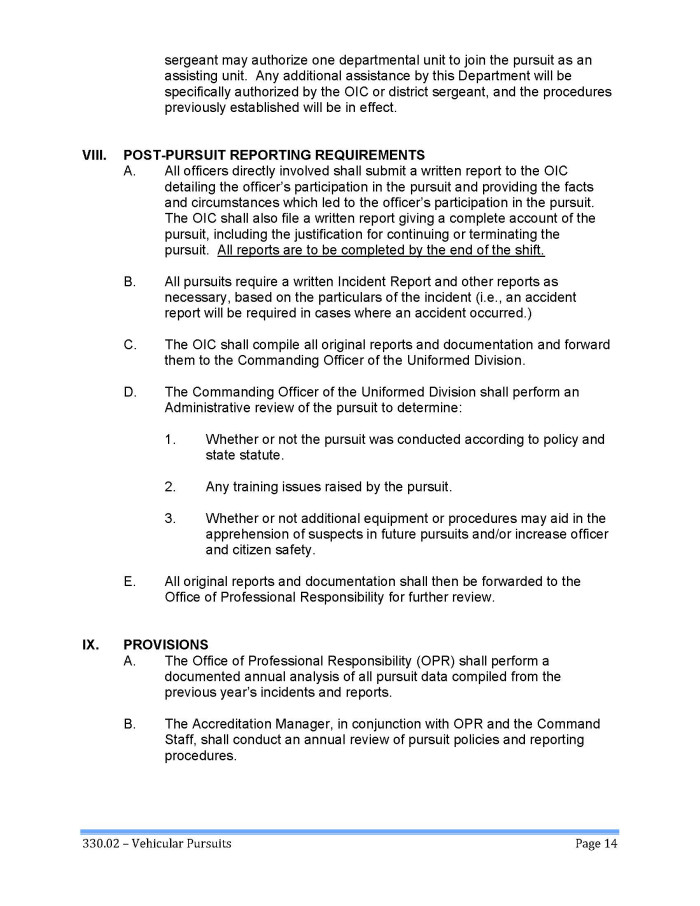Did Providence Police Follow Pursuit Policy in Santos Chase and Death?
Monday, November 13, 2017
In 2014, the Providence Police issued a 15-page policy outlining pursuits and it specifically delineates under what conditions a pursuit is allowed. The policy is signed by Police Chief Hugh Clements and Public Safety Commissioner Steven Pare.
According to the Department’s policy, it is difficult to understand why Thursday's fatal pursuit began, continued, and was not terminated.
GET THE LATEST BREAKING NEWS HERE -- SIGN UP FOR GOLOCAL FREE DAILY EBLASTREAD THE FULL PROVIDENCE POLICY BELOW
In 2015, USA Today published a series of articles and its analysis showed more than 5,000 bystanders and passengers had been killed across the United States in police chases since 1979. Tens of thousands more were injured as officers repeatedly pursued drivers at high speeds and in hazardous conditions, often for minor infractions.
A report from the International Association of Chiefs of Police (IACP) and the National Institute of Justice showed 91% of high-speed chases are initiated in response to a non-violent crime. The study analyzed nearly 8,000 high-speed chases in the IACPs database. It found that 42% involved a simple traffic infraction, another 18% involved a stolen vehicle, and 15% involved a suspected drunk driver.
What was the threat?
First, a look at the threat to the public and to police.
At approximately 9:00 a.m on Thursday, Donald Morgan stole a Rhode Island State Police cruiser from a State Trooper.
By 9:15 a.m. the cruiser was recovered at 45 Vineyard Street in Providence. The State Police immediately determined that the Trooper's weapon was secure in the cruiser’s trunk.
A witness at the scene told police that Morgan may have gotten away in a white Ford pick-up truck.
With no weapon and still wearing handcuffs, Morgan was little threat. One Providence Police officer tells GoLocal, “Morgan was a sad case, a loser, but not really a violent threat.”
While Morgan may have embarrassed the State Police, he was not historically a violent perpetrator. Pare said at the Providence Police press conference on Friday, when Morgan was still at large, “We don’t consider him a violent or armed and dangerous…he is a wanted person but not violent or dangerous.”
Providence Police Chief Clements described the theft of the State Police cruiser and the pursuit and shooting of Santos and Demers as two separate incidents.
However, the spark for looking for a white pickup was the pursuit of Morgan, who police knew by 9:15 a.m. was neither armed nor dangerous.
The number one directive of the Providence Police pursuit procedures sections states:
Providence Police Procedures
PROCEDURE I. PREVENTING A PURSUIT A. Officers should take every reasonable opportunity to prevent a pursuit when possible. Officers anticipating that a suspect will flee upon activation of emergency lights and siren are encouraged to utilize techniques and strategies which may reduce the likelihood of a pursuit occurring. In all cases, the utilization of such techniques and strategies should be used if and only if they do not constitute a greater risk to officer and/or public safety.
A GoLocal review of all media accounts relating to pursuits by Providence Police reported over the past two years showed that in nearly each case, the published or broadcast media story outlined that the pursuit was tied to a significant violent event -- it was the trigger to the pursuit and there was a firm belief by police that the alleged perpetrators were armed.
On April 15, 2016 WJAR-10 reported that Providence Police pursued after gunshots. “A police pursuit ended on Route 10 near Westminster Street early Friday morning after the driver of a vehicle allegedly opened fire on Broad Street in Providence.”
On October 14, 2017, Boston TV station WCVB reported that Providence and Rhode Island State Police pursued after shots were fired.
Two suspects were arrested early Saturday morning after police say a traffic stop led to gunfire and a high-speed pursuit. It started when officers say they tried to pull offer a vehicle on Red Wing Street in Providence, Rhode Island.
The driver allegedly sped at officers. The officers opened fire, striking the driver in the arm. Providence police and Rhode Island state troopers pursued the vehicle into Massachusetts, where the chase ended on Plymouth Avenue in Fall River.
Both the driver and passenger were taken into custody.
A June 19, 2016 Providence police chase of two wanted individuals who were armed and were being pursued their involvement in a shooting, led to the wanted individuals crashing into a Providence home and a police SUV crashing. WPRI reported:
As neither Morgan was a threat and the police were not even aware of who was driving the white pickup, Joseph Santos or Christine Demers, they could not be perceived as public threats, as it related to the putsuit. It was only at the end of the pursuit, when Santos attempted to flee the more than forty law enforcement vehicles in pursuit and hit a vehicle in its path -- did police then deem Santos a threat with a "deadly weapon," that being his truck.
It was only after the shooting of Santos and Demers did police learn the Santos had an outstanding warrant -- reportedly for driving with a suspended license.
The Criteria for Initiating a Pursuit
A. Pursuits are limited to those situations which involve:
1. The attempted apprehension of persons wanted for the commission of felonious and/or misdemeanor acts that have threatened, threaten, or will threaten the health, life or safety of a person or persons; OR
2. The pursuit of a motor vehicle operator who has committed flagrant moving motor vehicle violations which have endangered the lives and safety of others, and who was operating in a reckless manner before the pursuit was initiated, and continues to operate in a manner that recklessly endangers the lives and safety of others, including, but not limited to, driving under the influence of liquor or drugs.
B. No police vehicle is permitted to initiate or participate in a pursuit unless it is an authorized emergency vehicle equipped with functioning emergency lights and siren which are activated during the pursuit. 1. In the event that an officer operating a motorcycle, unmarked vehicle, or other special use vehicle initiates a pursuit: a. The officer shall cease to be the primary unit and act as the secondary unit when a marked patrol vehicle is in position to assume the pursuit. b. Upon the arrival of a second marked patrol vehicle, the initiating officer will cease participation in the pursuit. 2. An officer will not engage in a pursuit while transporting a prisoner, any civilian, or any non-sworn PPD personnel.
C. Prior to initiating or becoming involved in a pursuit, the following factors should be considered:
1. Nature and seriousness of the suspected offense.
2. Geographic location.
3. Time of day.
4. Road conditions.
5. Weather conditions.
6. Visibility.
7. Other vehicle and/or pedestrian traffic.
8. The officer’s knowledge of the road and surrounding area.
9. The performance capabilities of the pursuit vehicle and the suspect vehicle.
10. Any other conditions known to the officer that may be potentially hazardous.
11. Balancing the pursuit’s danger to the public and the officer with allowing the suspect to escape.
Editor's note: an earlier version of this article misspelled Demers' first name. We apologize for the error.
Related Slideshow: City of Providence Pursuit Policy - 2014
Related Articles
- PROVIDENCE SHOOTING: Step-by-Step How Deadly Police Shooting on I-95 Unfolded
- Morgan Who Took RISP Cruiser Charged with 6 Counts and 2 Others Charged for Harboring
- VIDEO: Governor Raimondo Defends Police Shooting of Santos and Demers
- Video of Providence Police Press Conf Explaining the Use of Deadly Force & the Killing of Santos
- EXCLUSIVE VIDEO: Police Shooting in Providence Caught on Camera
- Providence Shooting Gone Wrong - State Police and Providence Police Shot the Wrong People
- Did Providence Police Follow Pursuit Policy in Santos Chase and Death?




